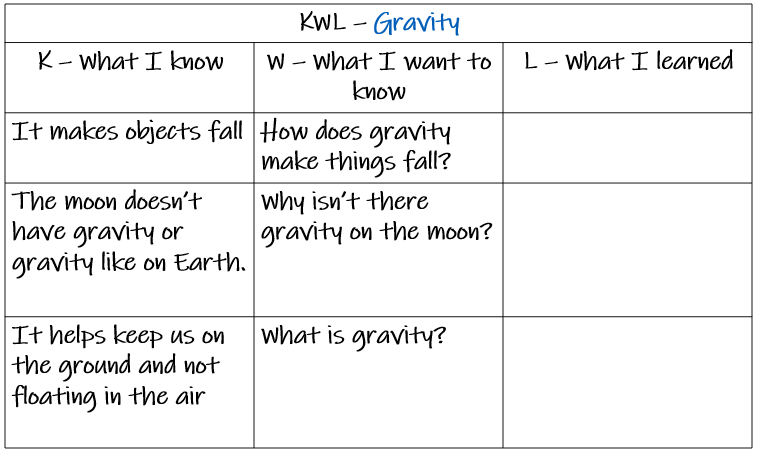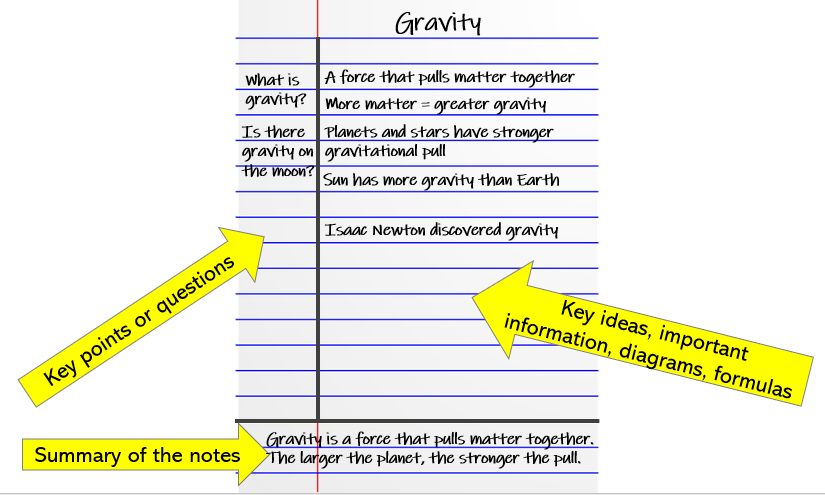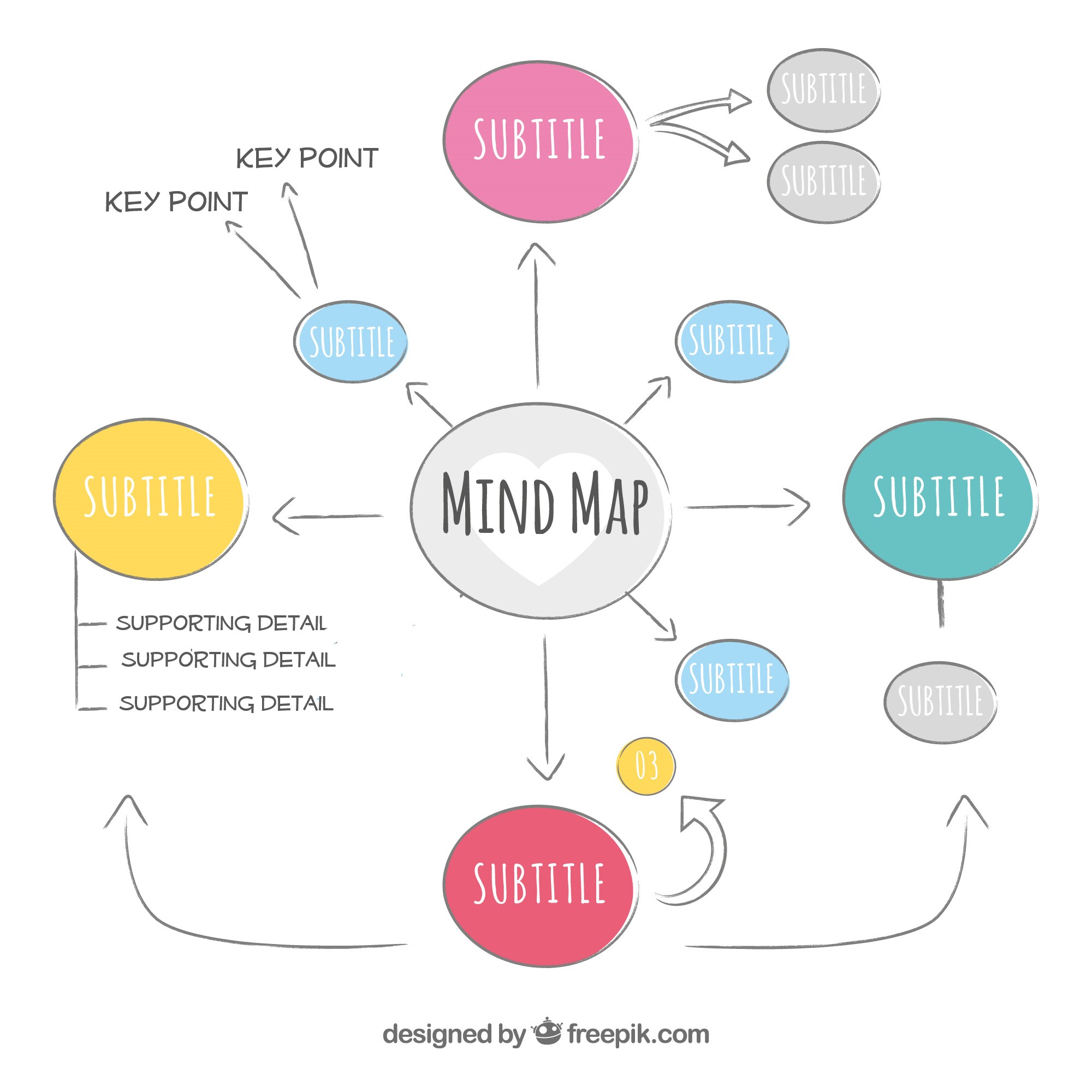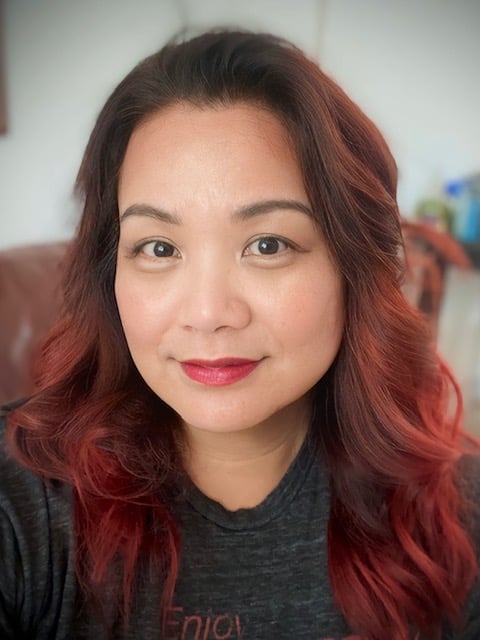
I take lots of notes. Notes for projects at work. Notes when I take a training. Notes when I’m in a meeting. Notes for things I need to do at home. So many notes! But I have discovered in my [fill in the blank] years of taking notes that if I don’t immediately go back and review them, highlighting what I seriously need to do and/or remember, those notes are just words on a page stored in a notebook (of more pages of notes).
Our students are expected to take notes, yet many don’t know how to or what to do with those notes afterwards. Some write down everything written on the board or in a book, or everything they hear in a video. Others don’t write down anything at all believing they’ll “remember it” which is often the opposite of what happens. It is important that our students know how to take notes that will help them focus on learning and absorb new information. Especially as more and more students are in a hybrid or remote learning environment, note-taking takes on new significance since teacher contact is limited to scheduled sessions versus “hands-up-for-help” accessibility in the classroom.
There are several benefits for students when taking notes. Students --
- practice their listening skills, which also stimulates their thinking as they synthesize new material
- become actively engaged in the learning process, instead of passively listening to what is being presented
- organize information into clear and comprehensible chunks while recognizing what is important and what is extraneous
- learn to paraphrase and restate in their own words, boosting their comprehension as they take ownership of new facts and ideas
Besides the ones listed, note-taking can help students identify the main points in a lesson, summarize what was learned, and transfer that information into long-term memory. The goal of note-taking is not simply to prepare for a quiz or test, but to merge ideas and information so that it can be applied to new concepts, topics, and situations. With the benefits in mind, teaching students how to take notes is critical.
Modeling how to take notes as a class is the first step in developing this skill. Start with a simple KWL chart and video. Before playing the video, work with the class to fill in the first two columns. While the video is playing, have everyone fill in the “L” column independently. Emphasize the importance of jotting down new vocabulary and main points. When the video is done, compare “L” notes, and provide feedback so that students can differentiate between what is necessary and unnecessary information.

Since students respond to different learning modalities, introduce, and practice the following types of note-taking methods. (Click on each note-taking method for a video)


After introducing each method, have students share their notes with a classmate or in small groups. They will recognize what is missing from their notes, revise them, and have a more thorough collection of content to review later. Another idea is to share samples of notes that include main points, formulas, key steps, etc. Discuss why these samples will help a student remember what was taught in a lesson. Also share weak samples and have the class identify what could be improved. They will get better at recognizing focus points from future lessons.
Using color and color-coding can also help students recall important points from a lesson. Making connections between these key points will help them retain what they are learning. For younger learners, assigning colors for specific information (yellow for main idea, blue for supporting detail, etc.) will help guide them as they move towards taking notes on their own.
Encourage your students to try out more than one style of note-taking so that they will choose those they are comfortable with and help them retain information. Include taking notes as part of assignments, with the expectation that students will share their notes with classmates or you. From time to time, review student notes to give you insight on how they are processing information, especially if they did poorly on an assessment or quiz.
Good note-taking skills are an asset as more students participate in remote learning in some form (part-time or fully). They will have to rely on these skills more as they take in content via video, website, and reading through lots of text. So, take the time to help your students develop note-taking skills that will help them as they move through their academic careers.
To learn more about the Boxlight suite of class collaboration and interactive technology for student learning, go to mimio.boxlight.com.
For information on teacher professional development, including how to use G Suite and Microsoft 365, for distance teaching go to mimio.boxlight.com/professional-development-teachers.


